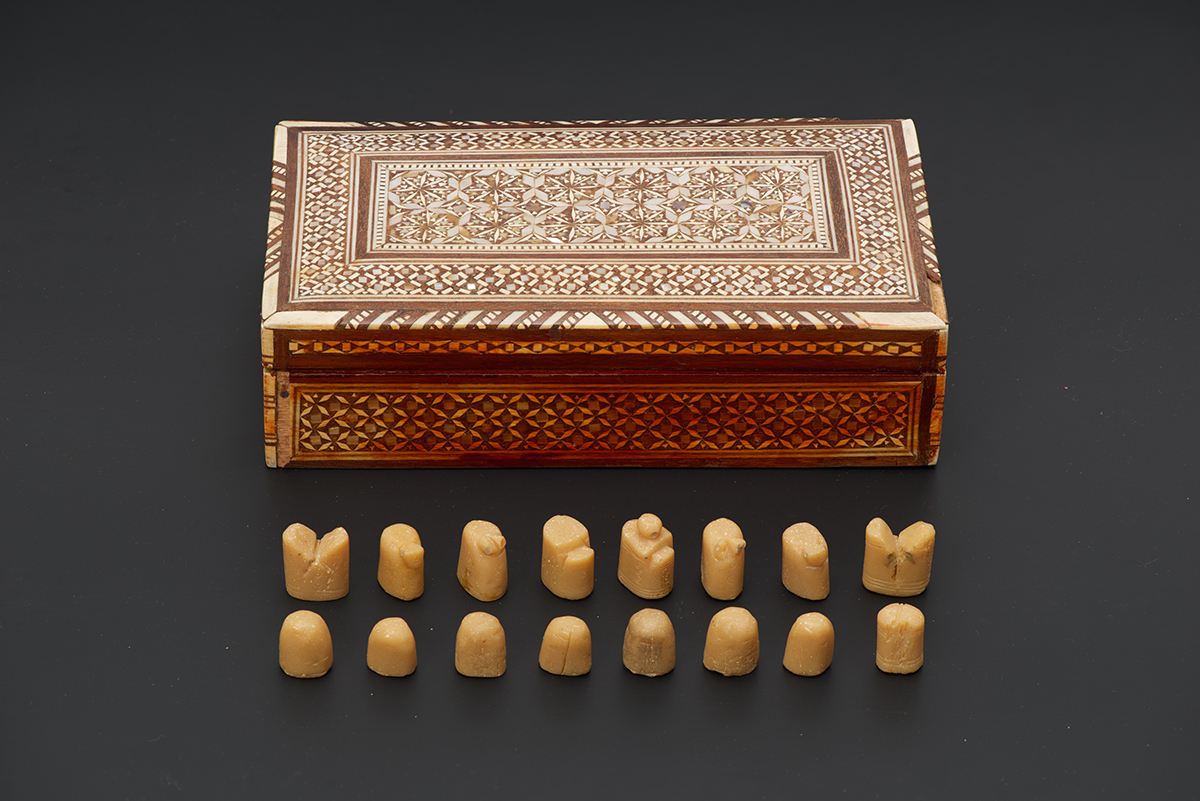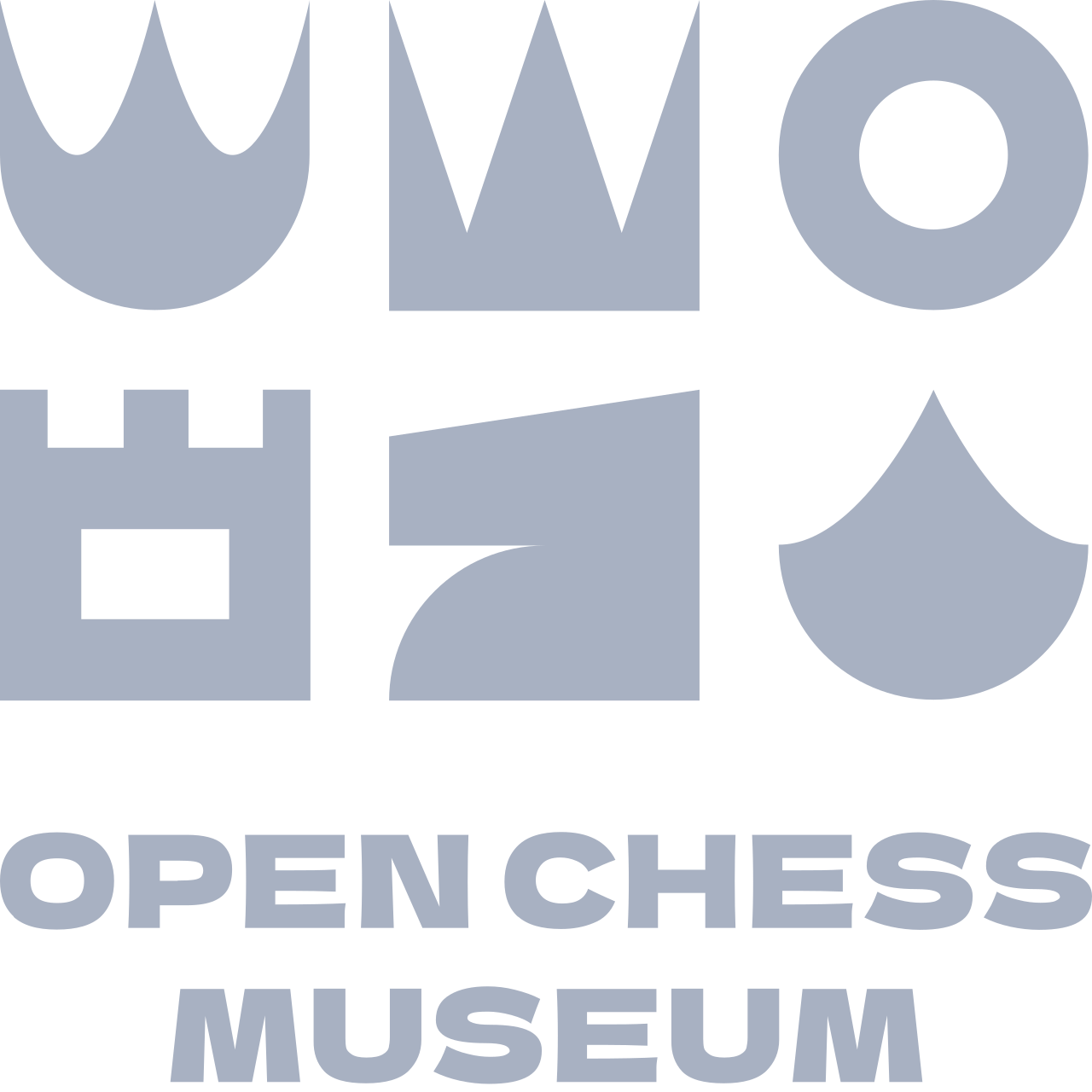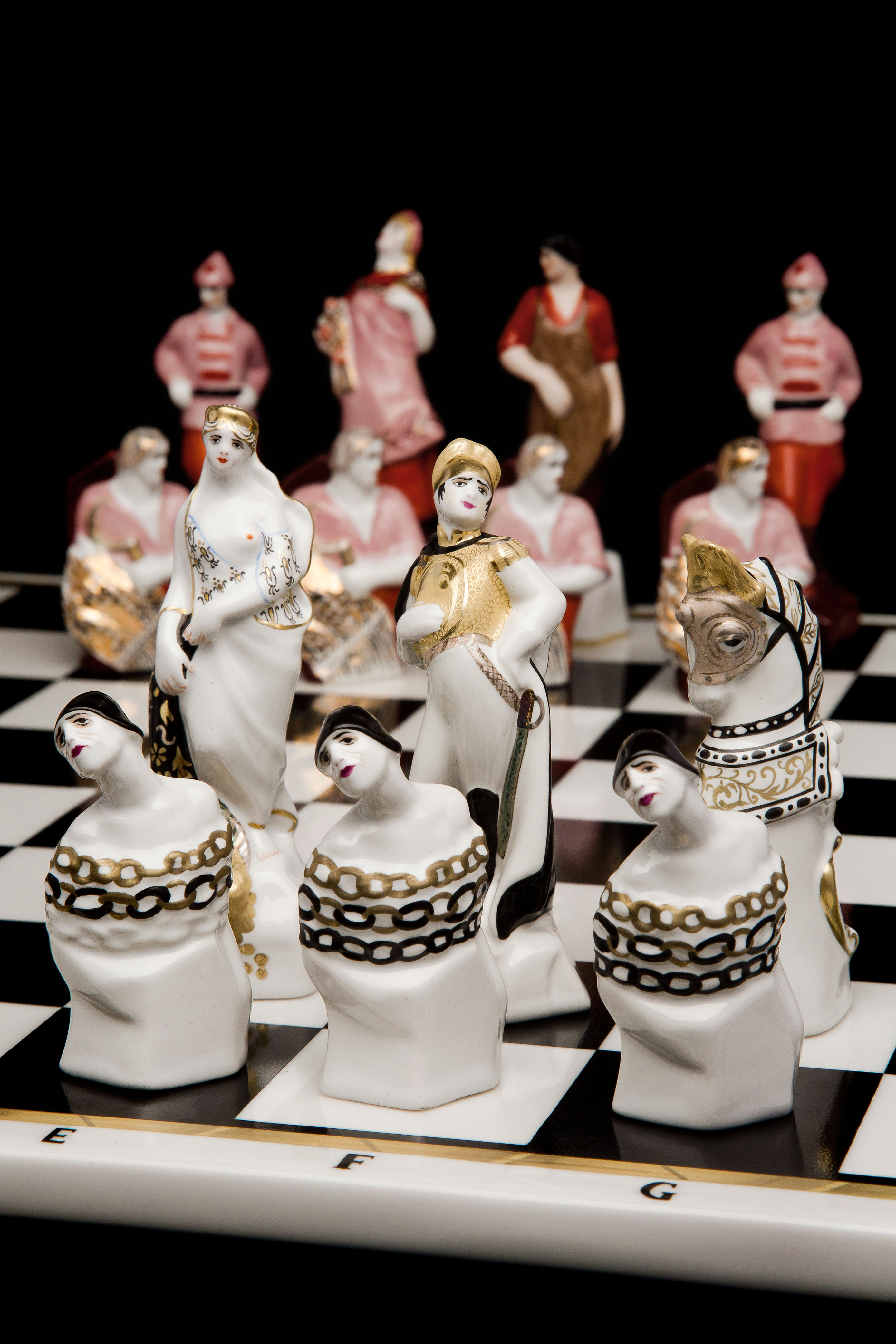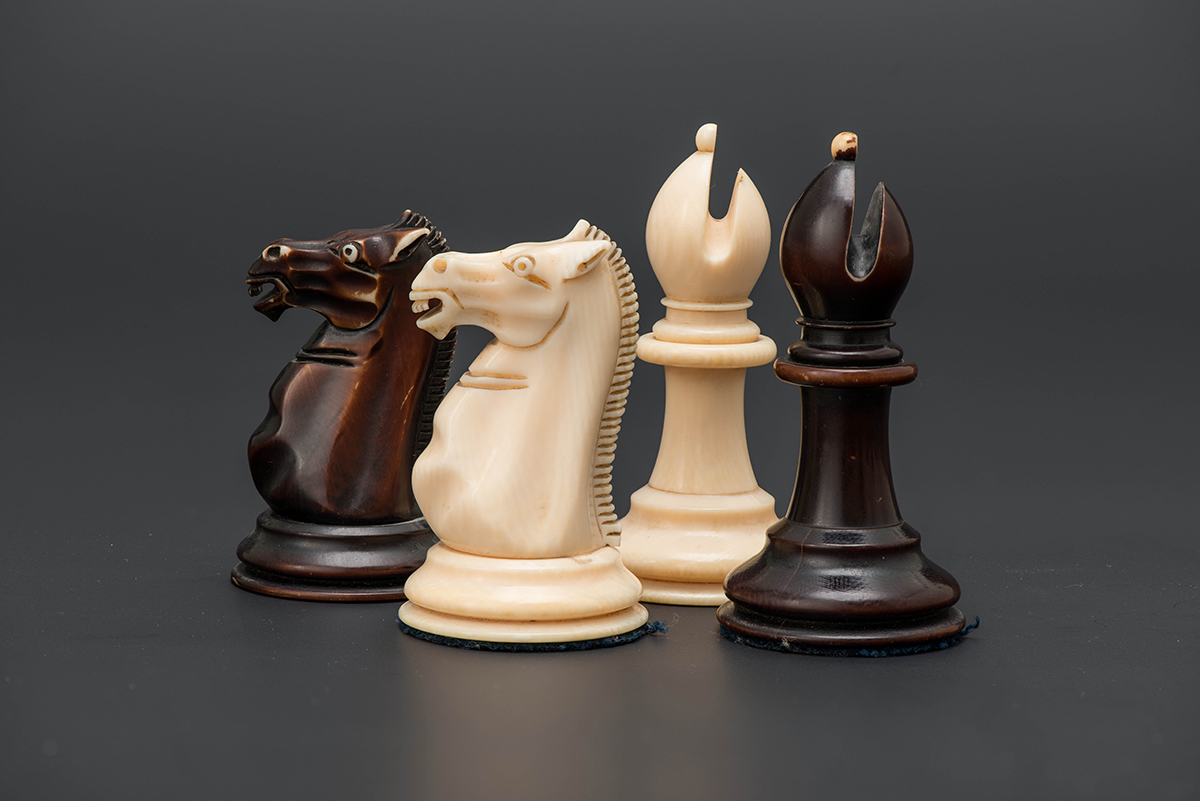Shatranj

Period
12th centuryPlace
Iran
Material
Stone
Location
Russia, Moscow, Chess Museum of the Central Chess Club
Category
The GameSubcategory
Chess setsThematic collections
Chess before the 20th centuryChess sets that belonged to famous chess players
Curious fact
The initial setup in shatranj was essentially the same as in modern chess; however, the position of the white shah (king), on the right or left side was not fixed
In 1976, the famous grandmaster and rarity enthusiast David Bronstein returned home with a unique trophy: an unusual chess set in a box inlaid with mother of pearl. The pieces are so abstract that none can be identified without hints. All were made using the technique of medieval Persian chess — shatranj, as they called the game in the Arab East. Since Islam forbade the depiction of human figures and animals, we can only guess their identities: a symbolic elongated horse muzzle on the second piece from the edge; slightly protruding elephant tusks on the next piece. The king is depicted as the royal throne, while the queen (“vizier” or “prime minister” in the East) is also a throne but a less lavish one. The edge piece is a mysterious creature, the Roc, a mighty and formidable mythic bird. Europeans later saw the silhouette of a fortress wall merlon (the rook) in its shape. The heyday of shatranj in the East began in the 10th–11th centuries, when the first recognized masters, like Al-Suli, made history. The celebrated poet Omar Khayyam (1048–1131) even described life through chess:'Tis all a Chequer-board of Nights and Days Where Destiny with Men for Pieces plays: Hither and thither moves, and mates, and slays, And one by one back in the Closet lays.



